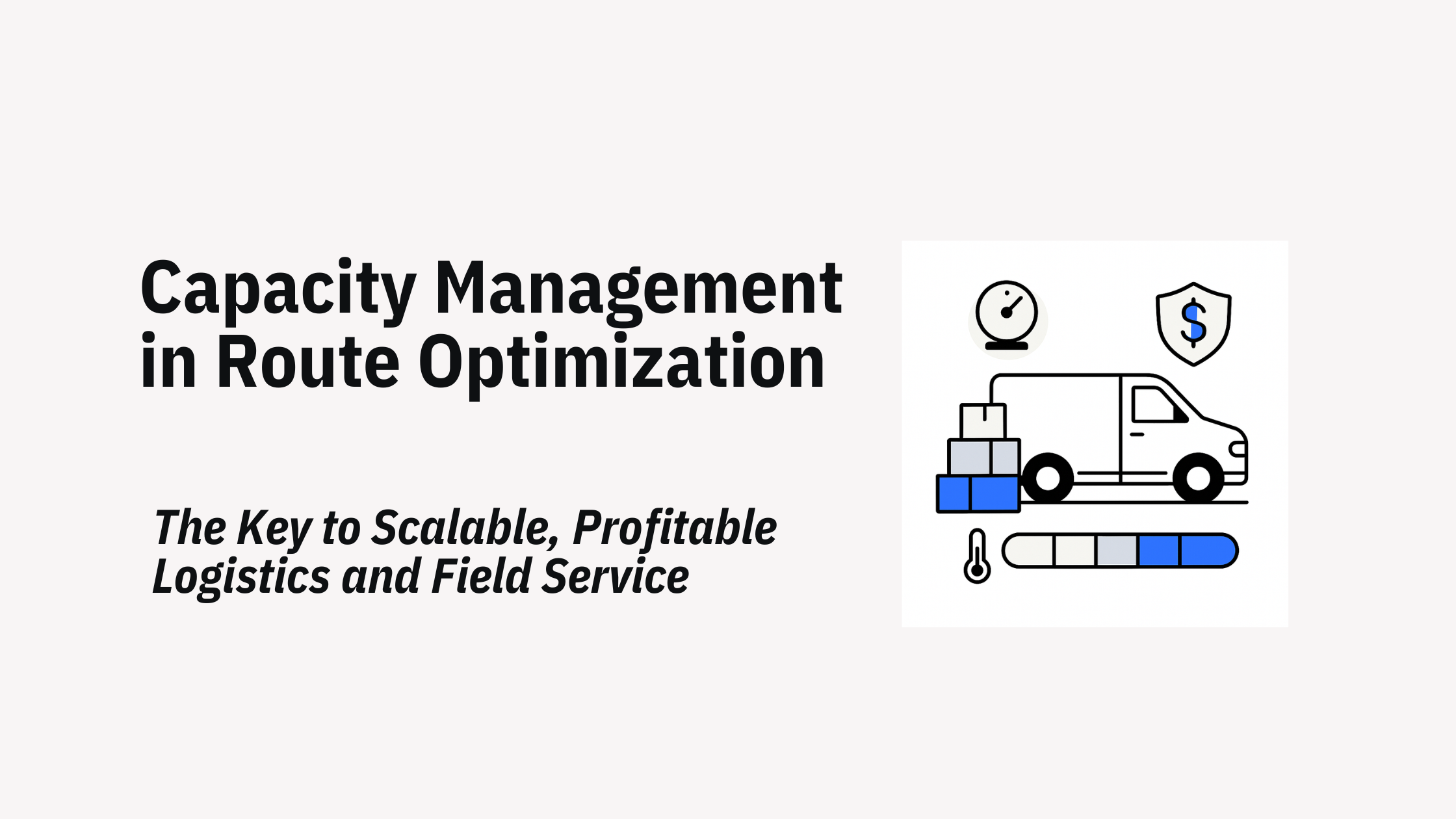Discover how fleet route optimization can transform your logistics operations. Uncover the challenges, benefits, and how Solvice's API can streamline your fleet management.

In the fast-paced world of logistics and transportation, efficiency is the name of the game. Every minute counts, and every mile driven impacts the bottom line. Enter fleet route optimization—a powerful strategy that can revolutionize the way you manage your fleet. From reducing fuel costs to improving customer satisfaction, optimizing your fleet's routes is a game-changer. Let's explore what fleet route optimization entails, the challenges it presents, the myriad benefits it offers, and how Solvice's API can be your secret weapon in this endeavor.
Fleet route optimization is the process of determining the most efficient routes for a fleet of vehicles to take in order to complete a set of deliveries or services. It's not just about finding the shortest path from point A to point B; it's about considering various factors such as traffic conditions, delivery windows, vehicle capacity, and even driver preferences. By analyzing these elements, businesses can create routes that minimize travel time, reduce fuel consumption, and enhance overall operational efficiency.
- Traffic Patterns: Understanding and predicting traffic conditions to avoid delays.
- Delivery Windows: Meeting specific time slots for deliveries to ensure customer satisfaction.
- Vehicle Capacities: Maximizing the load each vehicle can carry without exceeding limits.
- Driver Preferences and Regulations: Taking into account driver rest periods and preferences to ensure compliance and satisfaction.
While fleet route optimization offers immense benefits, it's not without its challenges. Navigating these hurdles requires careful planning and the right tools.
1. Dynamic Variables: Routes can be affected by unforeseen factors such as road closures or sudden weather changes.
2. Complex Constraints: Balancing multiple constraints like delivery windows, capacities, and driver hours can be daunting.
3. Data Volume: Managing and analyzing vast amounts of data to make real-time decisions can overwhelm traditional systems.
4. Technological Integration: Ensuring that optimization tools seamlessly integrate with existing systems and processes.
Despite the challenges, the benefits of implementing fleet route optimization are too significant to ignore. Let's dive into the advantages that make this strategy a must-have for businesses with mobile workforces.
- Cost Reduction: By finding the shortest and most efficient routes, businesses can significantly cut down on fuel and maintenance costs.
- Increased Productivity: Optimized routes mean less time on the road and more time delivering goods or services.
- Improved Customer Satisfaction: Timely deliveries and services lead to happier customers and repeat business.
- Environmental Impact: Reduced fuel consumption means a smaller carbon footprint, aligning with sustainability goals.
- Data-driven Decisions: Leveraging data analytics for route planning enables better strategic decisions.
The complexity of fleet route optimization requires more than just manual calculations. This is where advanced tools like solvers come into play. Solvice's algorithm through an API offers a robust solution to tackle these challenges head-on.
- Real-time Optimization: Solvice's route optimization API can process real-time data, adapting routes on-the-fly in response to changing conditions.
- Scalability: Whether you have a small fleet or a large one, the API scales to meet your needs without compromising performance.
- Integration: Seamless integration with existing systems using our stateless API ensures a smooth transition and minimal disruption.
- Modularity: Set the right parameters so the solutions meets your specific business requirements.
- Dynamic Routing: Adjusts routes in real-time based on traffic updates and delivery changes.
- Machine Learning: Uses historical data to optimize future routes.
- Resource Allocation: Ensures optimal use of vehicles and drivers, reducing idle time and increasing throughput.
Q1: How does fleet route optimization impact delivery times?
A1: By optimizing routes, delivery times are reduced as vehicles take the most efficient paths, avoiding traffic jams and other delays.
Q2: Can small businesses benefit from fleet route optimization?
A2: Absolutely! Small businesses can significantly cut costs and improve service quality by implementing fleet route optimization strategies.
Q3: How does Solvice's API integrate with existing systems?
A3: Solvice's API is designed for seamless integration, ensuring a hassle-free implementation with minimal disruption to current operations.
Q4: What kind of data does fleet route optimization rely on?
A4: It relies on data such as map and route information, delivery windows, vehicle capacities, and historical traffic information.
Fleet route optimization is no longer a luxury but a necessity in today’s competitive landscape. It transforms logistics operations, enhances customer satisfaction, and reduces operational costs. Although challenges exist, the benefits far outweigh them, especially when leveraging advanced solutions like Solvice's API. Embrace fleet route optimization, and watch your business drive into the future with unparalleled efficiency and effectiveness.


